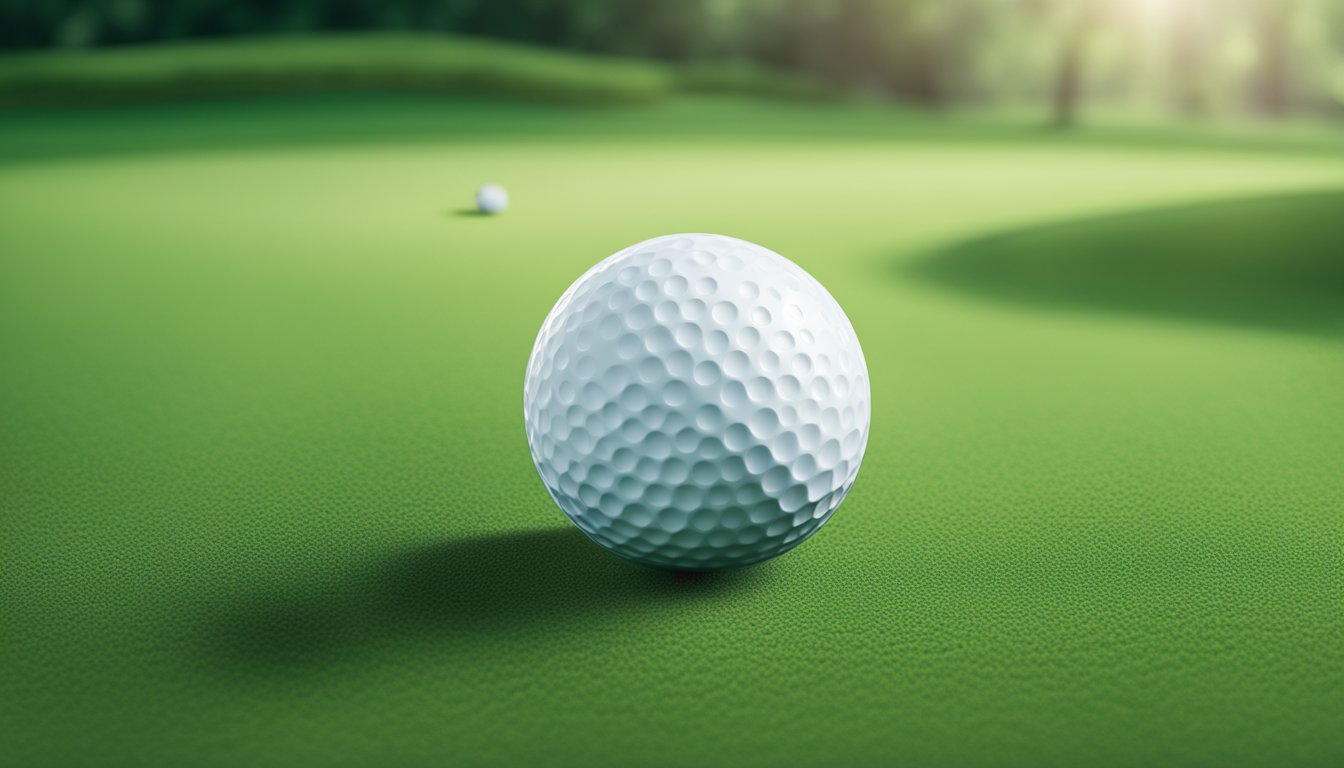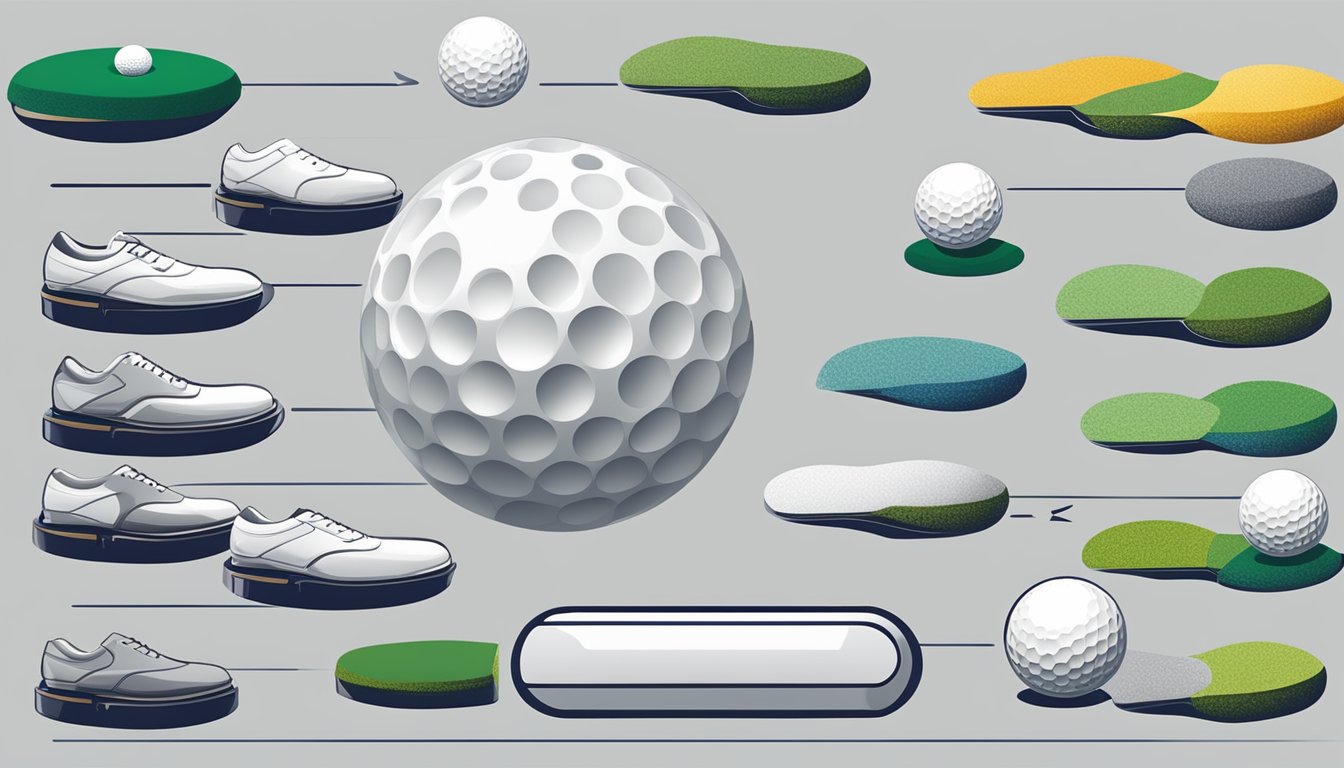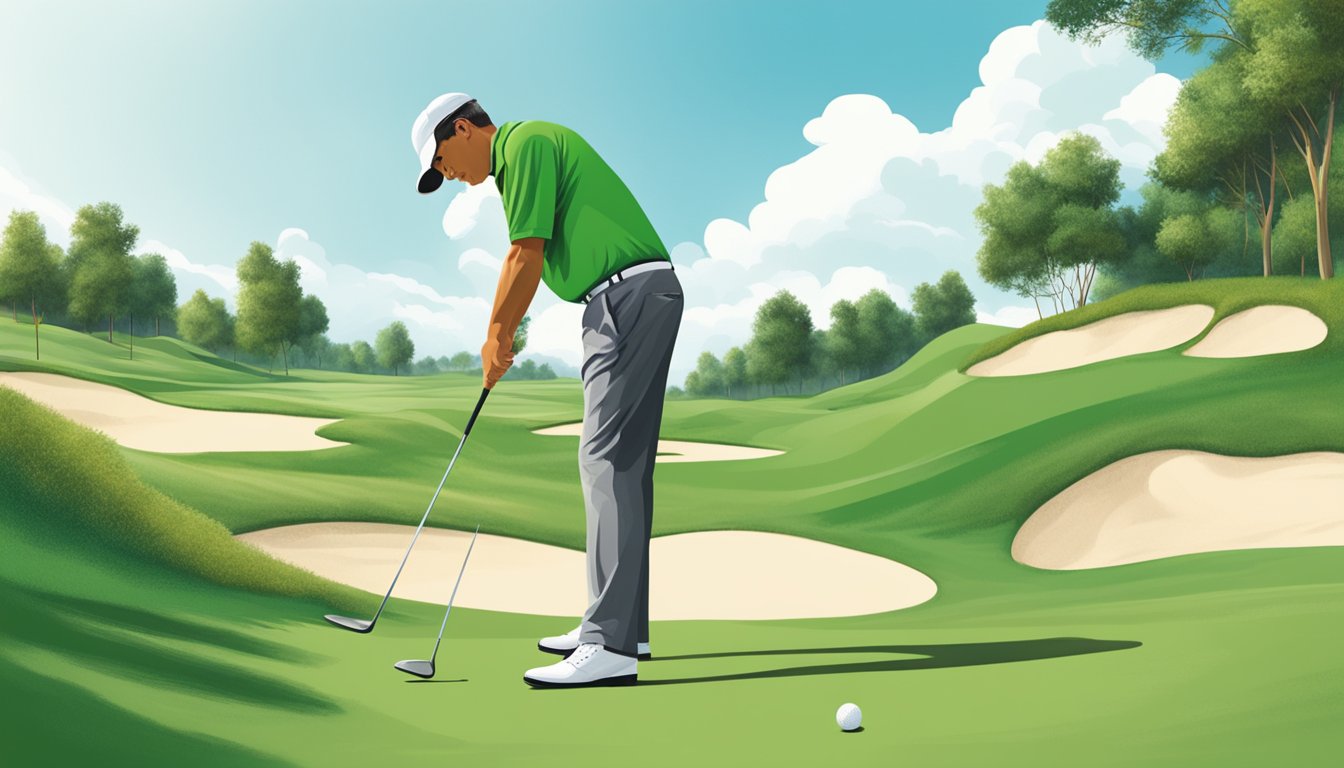If you’re a high handicapper, choosing the right golf ball can make all the difference in your game. With so many options on the market, it can be overwhelming to know where to start. But fear not, we’ve done the research for you and compiled a list of the best golf balls for high handicappers.
Before we dive into the best golf balls for high handicappers, it’s important to understand what makes a golf ball suitable for this skill level. High handicappers typically have slower swing speeds and struggle with accuracy, so a golf ball that helps with distance and control is essential. Additionally, high handicappers may not want to spend a lot of money on golf balls, so finding a ball that offers value is important.
Key Takeaways
- High handicappers need a golf ball that helps with distance and control
- A golf ball that offers value is important for high handicappers
- The best golf balls for high handicappers include the Callaway Supersoft, Titleist TruFeel, and Bridgestone e6.
Understanding the Needs of High Handicappers
https://www.youtube.com/watch?v=rsxZETY_C28&embed=true
As a high handicap golfer, you need a golf ball that can help you achieve maximum distance and control. High handicappers typically have a slower swing speed and less consistent ball striking ability. Therefore, you need a golf ball that can compensate for these weaknesses and help you achieve your best performance on the course.
One of the most important factors to consider when choosing the best golf balls for high handicappers is the compression rating. Golf balls with lower compression ratings are typically more forgiving and easier to hit for high handicap players. The Callaway Supersoft and Titleist Velocity are two examples of golf balls that have a low compression rating and are ideal for high handicappers.
Another important consideration is the ball’s cover. High handicappers need a golf ball with a soft cover that can help them achieve more spin and control around the greens. The Srixon Distance Ball is a great option for high handicappers who want a ball that can provide both distance and control.
In addition to compression rating and cover, high handicappers should also consider the type of ball they are using. Two-piece golf balls are typically the best option for high handicappers, as they are designed to provide maximum distance and forgiveness. However, there are also three-piece and four-piece golf balls available that can provide additional spin and control for high handicap players.
Overall, when choosing the best golf ball for high handicappers, it is important to consider all of these factors and choose a ball that can help you achieve your best performance on the course.
Key Characteristics of Golf Balls for High Handicappers
https://www.youtube.com/watch?v=dq5aKj1T23M&embed=true
If you are a high handicapper, choosing the right golf ball is crucial to improve your game. Golf balls for high handicappers have certain characteristics that make them different from other golf balls. Here are some key characteristics to look for when choosing a golf ball:
Soft Feel
Golf balls for high handicappers typically have a soft feel. This means that the ball compresses easily when hit, giving you a better feel and more control over your shots. A soft feel can also help you generate more spin and distance.
Low Spin
Low spin golf balls are ideal for high handicappers because they help reduce sidespin and keep your shots straighter. This is especially important for players who tend to slice the ball. Low spin golf balls also tend to have a higher launch angle, which can help you achieve more carry distance.
Forgiveness
Golf balls for high handicappers are designed to be forgiving. This means that they can help reduce the impact of mishits and make it easier to hit straighter shots. Forgiving golf balls typically have a larger sweet spot, which gives you more room for error.
Distance
Distance is another important characteristic to look for in a golf ball for high handicappers. Golf balls with a high-energy core can help you achieve more distance off the tee. Aerodynamic dimples can also help reduce drag and increase carry distance.
Compression
Compression is a measure of how much a golf ball compresses when hit. High compression golf balls are better suited for players with faster swing speeds, while low compression golf balls are better suited for players with slower swing speeds. High handicappers typically have slower swing speeds, so choosing a low compression golf ball can help you achieve more distance and accuracy.
Greenside Control
Golf balls for high handicappers should also have good greenside control. This means that they can help you achieve more spin and control on your short game shots. Golf balls with a soft core and ionomer cover are ideal for achieving good greenside control.
By considering these key characteristics, you can choose the right golf ball for your game and improve your performance on the course.
Best Golf Balls for High Handicappers
https://www.youtube.com/watch?v=TK859TdSagw&embed=true
As a high handicapper, choosing the right golf ball is crucial to improving your game. With so many options available, it can be overwhelming to decide which one to use. In this section, we will discuss some of the best golf balls for high handicappers to help you make an informed decision.
TaylorMade Soft Response
The TaylorMade Soft Response golf ball is an excellent option for high handicappers. It is designed to provide a soft feel and low compression, which can help improve your distance and accuracy. The Soft Response also features a high-quality cover that helps reduce spin, making it easier to control your shots.
Titleist Velocity
The Titleist Velocity is another great option for high handicappers. It is designed to provide maximum distance and a high ball speed, making it ideal for players who need help with their long game. The Velocity also features a soft feel and a low spin, which can help improve your accuracy.
Bridgestone e12 Contact
The Bridgestone e12 Contact golf ball is a great choice for high handicappers who want a well-rounded ball. It features a soft feel and low compression, which can help with distance and accuracy. The e12 Contact also has a unique design that features a larger, more stable core, which can help improve your ball flight and reduce spin.

Callaway Supersoft
« Proper maintenance and care for your golf glove: tips for cleanliness and longevity
Wilson Infinite Putter Review: A Comprehensive Look at the Latest Model »
The Callaway Supersoft golf ball is another excellent option for high handicappers. It features a low compression core and a soft cover, which can help improve your distance and accuracy. The Supersoft also has a low spin, making it easier to control your shots.
Srixon Soft Feel
The Srixon Soft Feel golf ball is designed to provide a soft feel and low compression, which can help improve your distance and accuracy. It also features a high-quality cover that helps reduce spin, making it easier to control your shots. The Soft Feel is an affordable option that provides excellent performance for high handicappers.
Overall, these golf balls are some of the best options for high handicappers. They provide a soft feel, low compression, and low spin, which can help improve your distance and accuracy. When choosing a golf ball, it is important to consider your individual needs and preferences to find the best fit for your game.
Cost Considerations
When it comes to choosing the best golf ball for high handicappers, cost is an important factor to consider. You don’t want to spend a fortune on golf balls that you might lose or damage during a round. At the same time, you don’t want to compromise on quality just to save a few bucks. Here are some cost considerations to keep in mind:

Value for Money
You want to get the most bang for your buck when buying golf balls. Look for balls that offer the best value for money. This means finding a ball that offers a good balance between price and performance. Don’t just go for the cheapest ball on the market, as it might not perform well and could end up costing you more in the long run. Consider the cost per ball and compare it to the performance of the ball to determine if it’s a good value.
Affordable Golf Balls
If you’re on a budget, there are plenty of affordable golf balls available that still offer good performance. These balls might not have all the bells and whistles of the more expensive balls, but they will get the job done. Look for balls that offer good distance and control, as these are the most important factors for high handicappers.
Best Value
If you’re looking for the best value, consider buying golf balls in bulk. Many manufacturers offer bulk discounts, which can save you a lot of money in the long run. Just make sure you choose a ball that you’re comfortable playing with, as buying in bulk means you’ll be stuck with a lot of balls if you don’t like them.
In summary, cost is an important consideration when choosing the best golf ball for high handicappers. Look for balls that offer good value for money, are affordable, and offer the best overall value. Don’t compromise on quality just to save a few bucks, as it could end up costing you more in the long run.
Final Thoughts on Choosing the Right Golf Ball

Choosing the right golf ball can make a big difference in your game. As a high handicapper, you need a ball that is durable and can withstand the wear and tear of your swings. You also need a ball that offers maximum distance and stability.
When selecting a golf ball, consider the options available to you. Some of the best overall golf balls for high handicappers include the Srixon Distance Ball and the Vice Drive. These balls offer extra distance and are great for swinging golfers.
If you are looking for a premium ball, consider the Titleist Pro V1. This ball offers stability in wind and contact force dimples that help with accuracy. The paraloid hybrid impact cover and 338-speed dimples make this ball a great choice for high handicappers.
When it comes to distance, the Callaway Chrome Soft X is one of the best options. This ball offers extra distance and stability, making it a great choice for high handicappers who want to improve their game.
Overall, the best golf ball for high handicappers is one that offers durability, maximum distance, and stability. Consider your options carefully and choose a ball that meets your needs and helps you improve your game.
Frequently Asked Questions
What are some recommended golf balls for players with a high handicap?
If you have a high handicap, you may want to consider golf balls that are designed to help you get more distance and accuracy. Some of the best golf balls for high handicappers include Callaway Supersoft, Srixon Soft Feel, Titleist TruFeel, TaylorMade Distance Plus, Volvik T2, Bridgestone e6, Maxfli Softfli Matte, and Wilson Ultra 500. These golf balls are designed to help you get more distance and accuracy, even if you don’t have a perfect swing.
Are there any golf balls that can help with slicing for high handicappers?
Yes, there are golf balls that can help reduce slicing for high handicappers. Some golf balls are designed to reduce side spin, which can help reduce slicing. For example, the Srixon Q-Star golf ball is designed to reduce side spin, which can help reduce slicing for high handicappers.
What factors should be considered when choosing a golf ball for high handicappers?
When choosing a golf ball for high handicappers, there are several factors to consider. First, consider your swing speed. If you have a slower swing speed, you may want to choose a golf ball with a softer compression rating. Second, consider your budget. Golf balls can range in price from a few dollars to over $50 per dozen. Third, consider your skill level. If you are a beginner, you may want to choose a golf ball that is forgiving and easy to hit.
Can high handicappers benefit from using softer golf balls?
Yes, high handicappers can benefit from using softer golf balls. Softer golf balls have a lower compression rating, which means they compress more when hit. This can help high handicappers get more distance and accuracy, even with a slower swing speed.

What are some of the best golf balls for beginners?
If you are a beginner, you may want to choose a golf ball that is forgiving and easy to hit. Some of the best golf balls for beginners include Callaway Supersoft, Srixon Soft Feel, Titleist TruFeel, TaylorMade Distance Plus, and Bridgestone e6.
How can I determine the best golf ball for my game as a high handicapper?
To determine the best golf ball for your game as a high handicapper, consider your swing speed, skill level, and budget. You may also want to try out different golf balls to see which one works best for your game. Keep in mind that the best golf ball for your game may not be the most expensive or the most popular.











